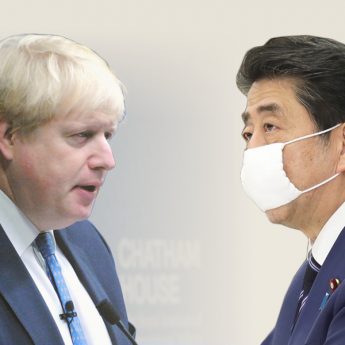Rakugo is a Japanese art form. It is a one-man comedy act which was perfected in the Edo period (1603–1868). It is stand-up comedy delivered by a performer who invariably sits on a cushion. So one might call it sit-down comedy.
The performer wears a kimono and carries nothing but a fan and a towel about his person. Those two items serve as every kind of prop for him, be it chopsticks, cigarette case, purse, oars, sword, lantern, what have you. The fan can even be used for sound effects by hitting it against the floor to depict urgent knocking or furtive footsteps as the case might be.
I bring up this subject not because I wish to introduce this wonderland of Japanese humour to BCCJ ACUMEN readers, although that would indeed be a very pleasurable task. I chose this topic because it seems to me that Japanese monetary policy is increasingly developing rakugo-like features. To be specific, the current state of Japanese monetary policy reminds me of a well-known rakugo piece called Jugemu.
Jugemu is not a word. It is only the beginning portion of a word. A word that goes on more or less forever. Mary Poppins lovers kindly recall “Supercalifragilisticexpialidocious”, although jugemu in its entirety is about 10 times as long and about 20 times more complicated.
The word is a hotchpotch of all things good and glorious, holy and auspicious. A young father wants to give his first-born child a name to beat all names. He asks the local priest for advice. The priest comes up with a full range of desirable names. Spoilt for choice, the father decides to take up all of them. The inevitable outcome is that every time someone calls the child’s name it takes forever. All sorts of interesting things happen as a consequence.
Take a breath
So let me now turn to Japanese monetary policy. The basic framework for what the Bank of Japan is doing now was laid down in April 2013. At that point, the policy was described as “quantitative and qualitative monetary easing”, or QQE for short. This was already quite a mouthful.
Come January 2016, it became longer. The new name was Quantitative and Qualitative Monetary Easing with a Negative Interest Rate. Or QQENIR, perhaps, although the term “for short” would hardly apply in this instance. For all its lengthiness, however, QQENIR did not last that long, for a renaming occurred yet again in September 2016. This time the new name was Quantitative and Qualitative Monetary Easing with Long and Short Time Interest Rate Management. I will not even try to think of an acronym for fear of developing a migraine.
This final version stands today, with further additions. In July 2018, the Bank of Japan decided to reinforce its existing policy. For this purpose it introduced something called “Strengthening the Framework for Continuous Powerful Monetary Easing”. The underlying policy itself is still called Quantitative and Qualitative Monetary Easing with Long and Short Time Interest Rate Management. The stronger framework for strong monetary easing is in the nature of an annex. Together with the annex, the full name of the current policy takes up fully two lines of text. It is impossible to read those lines without taking a breath along the way.
Hapless
The father who named his son Jugemu meant well. He could not resist adorning his beloved first born with every single wonderful word. But just what does the BOJ mean by adding storey upon storey of new names to its policy manoeuvres? Perhaps they themselves no longer know.
Moreover, the annex that they attached to their Quantitative and Qualitative Monetary Easing with Yield Curve Control is a total mystery. Nobody can quite make out why it should lead to strengthening the framework for continuous powerful monetary easing.
For that matter, why does a monetary easing policy that is already strong need to be stronger? You strengthen something because it is weak. If you strengthen something that is already strong you risk being accused of doping.
At this point another rakugo piece comes to mind. This one is called Hirabayashi. It is the story of a boy who goes out on an errand. He is to deliver a letter to somebody whose name may or may not be Mr Hirabayashi. It could well be Mr Tairabayashi. It could be something else altogether. Being unable to read and having forgotten to whom he was supposed to deliver the letter, the boy goes around asking everybody he meets how to read the name on the envelope he is carrying.
This being the surreal world of rakugo, everyone he asks tells him something completely different. Total confusion ensues. The stronger framework for strong monetary easing makes me feel very much like the hapless boy in that rakugo.







